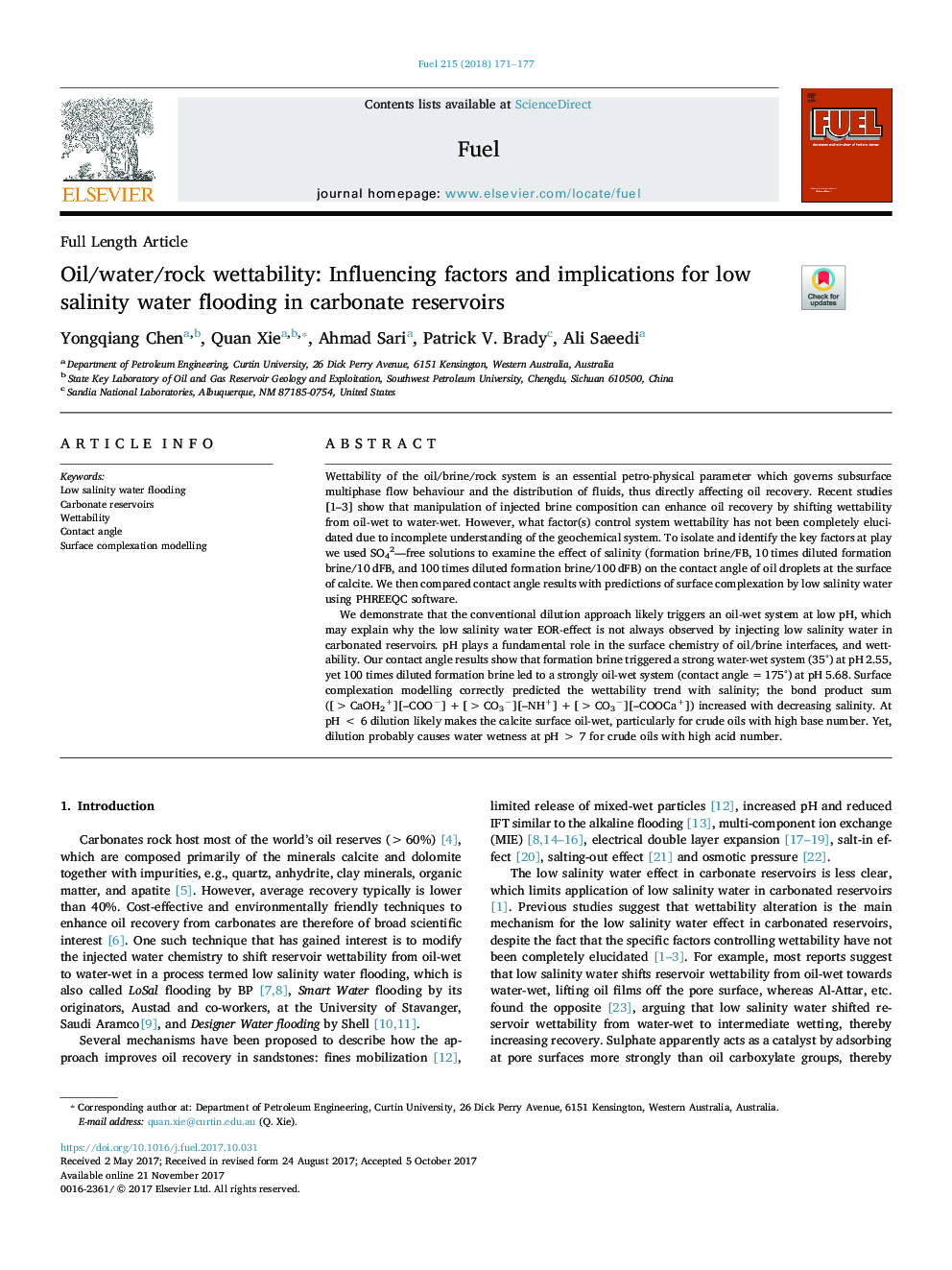| Article ID | Journal | Published Year | Pages | File Type |
|---|---|---|---|---|
| 6632268 | Fuel | 2018 | 7 Pages |
Abstract
We demonstrate that the conventional dilution approach likely triggers an oil-wet system at low pH, which may explain why the low salinity water EOR-effect is not always observed by injecting low salinity water in carbonated reservoirs. pH plays a fundamental role in the surface chemistry of oil/brine interfaces, and wettability. Our contact angle results show that formation brine triggered a strong water-wet system (35°) at pH 2.55, yet 100 times diluted formation brine led to a strongly oil-wet system (contact angleâ¯=â¯175°) at pH 5.68. Surface complexation modelling correctly predicted the wettability trend with salinity; the bond product sum ([>CaOH2+][-COOâ]â¯+â¯[>CO3â][-NH+]â¯+â¯[>CO3â][-COOCa+]) increased with decreasing salinity. At pHâ¯<â¯6 dilution likely makes the calcite surface oil-wet, particularly for crude oils with high base number. Yet, dilution probably causes water wetness at pHâ¯>â¯7 for crude oils with high acid number.
Keywords
Related Topics
Physical Sciences and Engineering
Chemical Engineering
Chemical Engineering (General)
Authors
Yongqiang Chen, Quan Xie, Ahmad Sari, Patrick V. Brady, Ali Saeedi,
